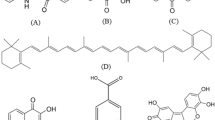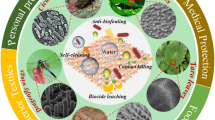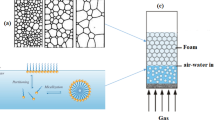Abstract
This paper suggests the optimal conditions to prevent electrostatic charge in the laundry by the evaluation of the electrostatic characteristics during the drying process. Cotton, nylon, and polyester fabrics were used as test specimens, employing the standard washing cycle. The electrostatic characteristics of the laundry were measured after the automatic drying process. This paper investigates the optimal conditions for preventing electrostatic charges in laundry by evaluating the electrostatic characteristics that occur during the drying process. Cotton, nylon, and polyester fabrics were used as the test specimens, employing a standard washing cycle. The electrostatic characteristics of the laundry were measured immediately after the automatic drying process. The results, showed that the moisture content decreased and the electrostatic charge increased with drying time. The specimen fabrics had already dried up before completion of the standard drying cycle. Consequently, the excessive drying generated an electrostatic charge due to removal of the traces of remaining moisture and the resulting excessive friction. For cotton fabrics, the electrostatic charge was under 1000 V even for the maximum drying time due to the intrinsic high moisture regain of cotton. On the other hand, the electrostatic charge produced for nylon fabrics increased rapidly with the drying time, and amounted up to approximately 8000V after 120 minutes. The results also indicated that the electrostatic charge could be decreased by drying fabrics of only one kind. When mixed kinds of fabrics were dried, the electrostatic charge increased remarkably. Therefore, it is suggested that laundry be classified and washed according to the kinds of fiber, and not be dried excessively to reduce electrostatic charge. In addition, the proper use of a softener is effective in reducing the electrostatic charge.
Similar content being viewed by others
References
W. G. Cutler and R. C. Davis, “Detergency”, pp.444–445, Marcell Dekker, New York, 1981.
J. Owen, “Electrostatic Discharge Control”, pp.49–50, McGraw-Hill, New York, 1990.
D. M. Taylor and P. E. Secker, “Industrial Electrostatics”, pp.82–85, J. Wiley, New York, 1994.
W. Morton, “Physical Properties of Textile Fibers”, p.231, The Textile Institute, Manchester, 1986.
R. H. Peters, “Moisture in Textiles”, pp.60–61, Textile Institute, Manchester, 1960.
S. M. Gawish, M. A. Saad, and A. Kantoush,Am. Dyestuff Rep.,75, 40 (1986).
P. Mallinson,J. Soc. Dyers Colour.,90, 67 (1974).
R. McConnell,Am. Dyestuff Rep.,67, 31 (1978).
Author information
Authors and Affiliations
Corresponding author
Rights and permissions
About this article
Cite this article
Park, C.H., Chung, S.E. & Yun, C.S. Effect of drying condition on the electrostatic characteristics of the laundry. Fibers Polym 8, 432–437 (2007). https://doi.org/10.1007/BF02875834
Received:
Revised:
Accepted:
Issue Date:
DOI: https://doi.org/10.1007/BF02875834




